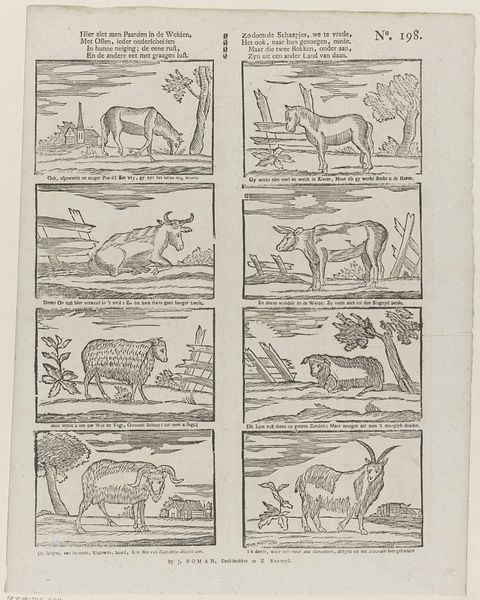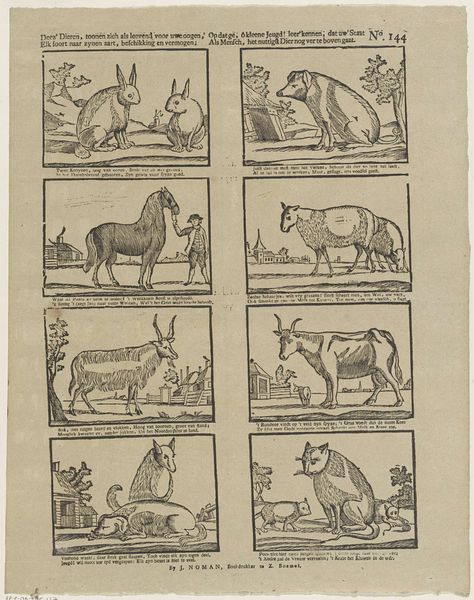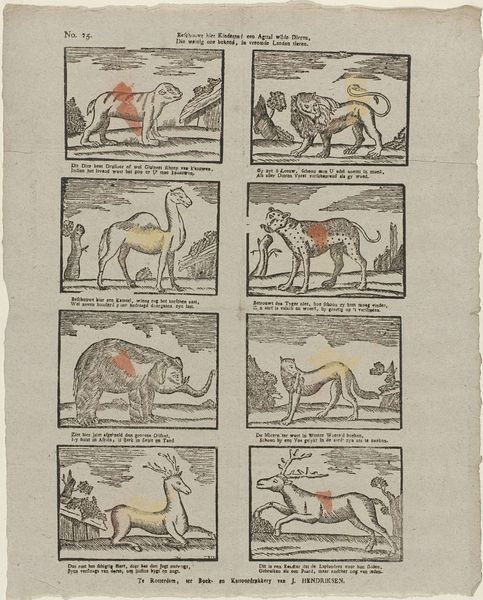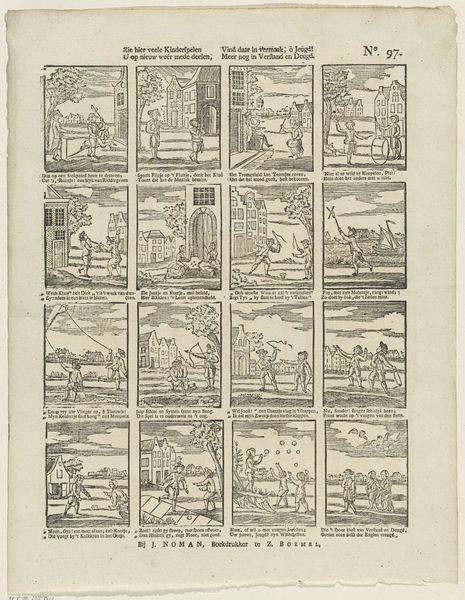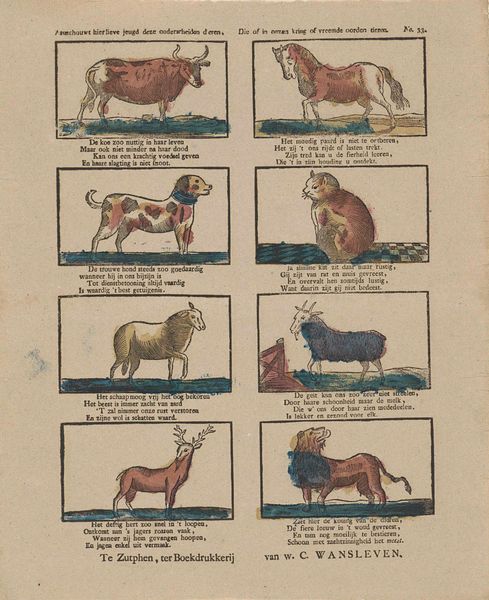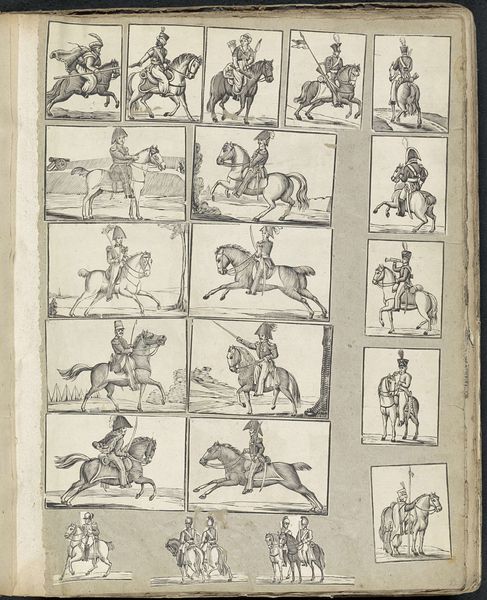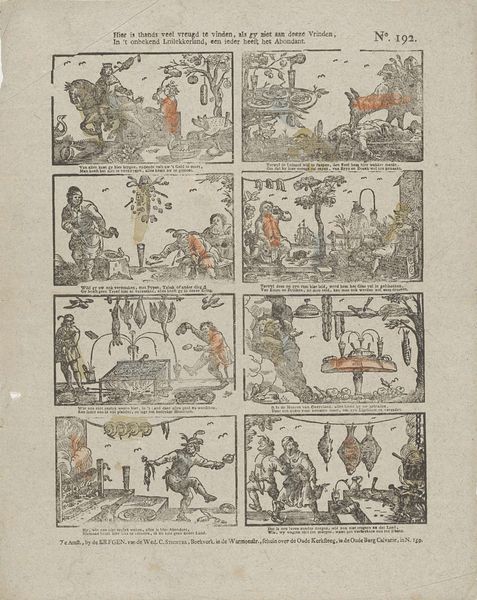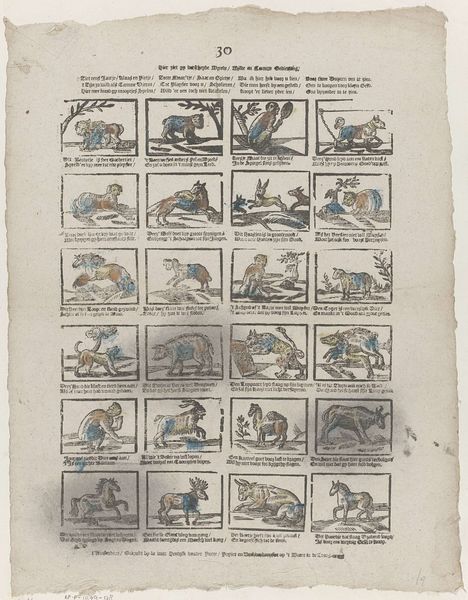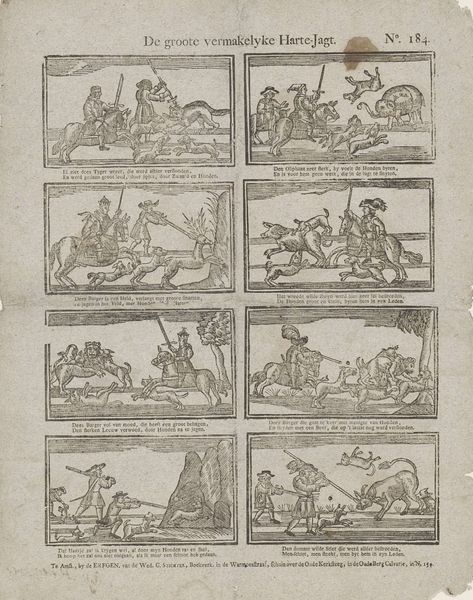![Hier ziet men paarden in de weiden, / Met ossen, ieder onderscheiden [(...)] by erven weduwe Cornelis Stichter](/_next/image?url=https%3A%2F%2Fd2w8kbdekdi1gv.cloudfront.net%2FeyJidWNrZXQiOiAiYXJ0ZXJhLWltYWdlcy1idWNrZXQiLCAia2V5IjogImFydHdvcmtzLzE2NjVlODJjLTVkZmYtNGEwOC04MDlhLWIyMTA2MTliYzdmNy8xNjY1ZTgyYy01ZGZmLTRhMDgtODA5YS1iMjEwNjE5YmM3ZjdfZnVsbC5qcGciLCAiZWRpdHMiOiB7InJlc2l6ZSI6IHsid2lkdGgiOiAxOTIwLCAiaGVpZ2h0IjogMTkyMCwgImZpdCI6ICJpbnNpZGUifX19&w=3840&q=75)
Hier ziet men paarden in de weiden, / Met ossen, ieder onderscheiden [(...)] 1715 - 1813
0:00
0:00
ervenweduwecornelisstichter
Rijksmuseum
print, engraving
#
dutch-golden-age
# print
#
landscape
#
horse
#
genre-painting
#
engraving
Dimensions: height 410 mm, width 330 mm
Copyright: Rijks Museum: Open Domain
Curator: Here we have an intriguing engraving, currently held at the Rijksmuseum. Attributed to erven weduwe Cornelis Stichter, this print from somewhere between 1715 and 1813, is titled "Hier ziet men paarden in de weiden, / Met ossen, ieder onderscheiden [(...)]". Editor: It gives off such a whimsical vibe. The organization into little boxes, almost like a sampler, makes the different animals feel contained and observed. And that soft color palette enhances the nostalgic feeling. Curator: It definitely captures a quaint sensibility. Notice how each scene features animals typical of Dutch pastoral life: horses, oxen, sheep, goats... grouped into a kind of bestiary. What draws me in is how this connects with the wider tradition of didactic prints. It's less about portraying the animals naturalistically and more about conveying some kind of lesson. Editor: You're right. There's definitely a storytelling quality, as well as an aspect that emphasizes the value of these different livestock. Considering the Dutch Golden Age was very driven by international trade and mercantilism, seeing depictions of such everyday animals invites you to recognize the basis of wealth-building. It's definitely a way to remind its audiences to keep it simple and be grounded. Curator: It strikes me that the inclusion of these snippets of poetry above each little panel also indicates that the image isn't meant to stand on its own. The language anchors the imagery within particular beliefs or values in a period in history when such works had both entertainment and moral-didactic value for their intended audiences. Editor: Exactly, because, while simplistic on the surface, each box presents unique behavior, the "humour", so to speak, rests in comparing the realities of the pasture with the supposed realities and expectations of 18th-century life. There's the ox at rest and the ox at work, sheep at peace and sheep that roam: this print becomes more a meditation of work and rest as states-of-mind within a period of significant social unrest. Curator: Precisely, with social satire as its explicit purpose. Well, considering the context behind this artwork certainly added another dimension for me. Editor: Agreed. It's been fascinating to unpack this piece; a little snapshot of rural life filled with layers of meaning, inviting a wider view on Dutch visual and literary culture.
Comments
No comments
Be the first to comment and join the conversation on the ultimate creative platform.
